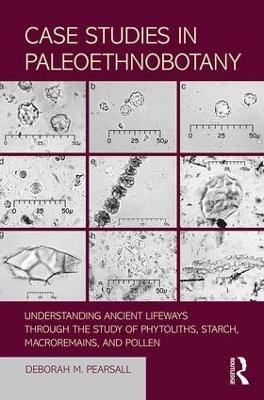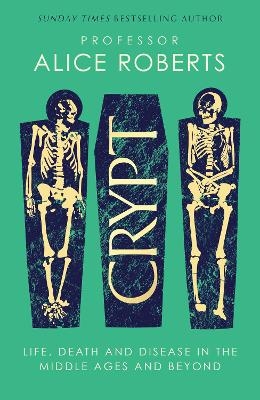
Case Studies in Paleoethnobotany
Left Coast Press Inc (Verlag)
978-1-61132-296-5 (ISBN)
This book is unique in its explicit focus on interpretation for "consumers" of paleoethnobotanical knowledge. Paleoethnobotanical inference is increasingly sophisticated and contributes to our understanding of the past in ways that may not be apparent outside the field or to all practitioners. The case study format allows in-depth exploration of the process of interpretation in the context of significant issues that will engage readers. No other work introduces paleoethnobotany and illustrates its application in this way.
This book will appeal to students interested in ancient plant–people interrelationships, as well as archaeologists, paleoethnobotanists, and paleoecologists. The short methods chapters and topical case studies are ideal for instructors of classes in archaeological methods, environmental archaeology, and ethnobiology.
Deborah M. Pearsall is Professor Emeritus at the University of Missouri, having retired in 2013 after 35 years. She holds a BA from the University of Michigan and an MA and PhD from the University of Illinois, all of which are in the subject of Anthropology. Her interests within this discipline center on South American archaeology and paleoethnobotany: the study of plant–people interrelationships through the archaeological record. She has conducted paleoethnobotanical research in numerous locations in the Americas. Her research has two broad themes: the origins and spread of agriculture in the lowland Neotropics, and methods and approaches in paleoethnobotany. She is the author of three books: Paleoethnobotany: A Handbook of Procedures; Plants and People in Ancient Ecuador: The Ethnobotany of the Jama River Valley; and, with D. R. Piperno, The Origins of Agriculture in the Lowland Neotropics. She was also the general editor of Academic Press’s 2008 Encyclopedia of Archaeology and has published in numerous professional journals and edited collections.
Table of Contents
Preface
Part I: The Nature and Study of Paleoethnobotanical Remains
Chapter 1. Paleoethnobotanical Remains
Introduction: The Paleoethnobotanical Approach
Paleoethnobotanical Data and their Study
Macroremains
Seeds
Fruits and nuts
Wood
Roots and tubers
Pollen
Phytoliths
Starch
Studying archaeobotanical remains
The comparative collection
Chapter 2. Deposition and Preservation of Paleoethnobotanical Remains
Introduction
Macroremain Deposition and Preservation
Summary
Deposition
Preservation
Grinding stone example
Phytolith Deposition and Preservation
Summary
Deposition
Preservation
Grinding stone example
Starch Deposition and Preservation
Summary
Deposition
Preservation
Grinding stone example
Pollen Deposition and Preservation
Summary
Deposition
Preservation
Grinding stone example
Conclusion: Deposition and Preservation of Paleoethnobotanical Remains
Chapter 3. Field Sampling and Recovery
Introduction
Strategies and Techniques for Sampling
Flotation and Fine Sieving
Flotation example: Using a SMAP-style system
Pre-flotation preparations
Flotation
Post-flotation cleanup
Hints for good recovery of macroremains by machine-assisted flotation
Collecting Artifacts and Residues for Starch (and other microfossil) Analysis
Guidelines for selecting artifacts
Criteria for artifact selection
Control samples
Handling artifacts
Provenience information
Field-sampling of residues for microfossil study
Supplies
Procedure for unwashed artifacts
Reducing water volume
Chapter 4. Approaches to Paleoethnobotanical Interpretation
Introduction
Qualitative analysis
Quantitative analysis
Common Measures used to Interpret Archaeobotanical Data
Raw data tabulation
Ubiquity/percentage presence
Ratios
Diversity
Application of multivariate techniques
Reading a Stratigraphic Diagram
Part II: Interpreting Paleoethnobotanical Data: Case Studies
Chapter 5. Investigating Neanderthal Life-ways through Paleoethnobotany
Introduction
Background to the Case Study
Neanderthal Diet(s): The Contribution of Plant and Animal Foods
Neanderthals as top predators: Faunal and isotope evidence
Neanderthals as foragers: Botanical evidence
Near East and Mediterranean
Central and northern Europe
Foraging practices of early modern humans
Near East, Europe and Africa
South and Southeast Asia
Discussion: Plant foods in Neanderthal diet
Neanderthal-Plant Interrelationships Beyond Diet
Medicinal plant use
Fuel selection
Ecosystem management
Spatial Organization of Sites as a Reflection of Modern Behavior
Early modern human example: Sibudu Cave, South Africa
Summary and discussion: Neanderthals and modern behaviors beyond diet
Conclusion: Investigating Neanderthal Life-ways through Paleoethnobotany
Chapter 6. The Paleoethnobotany of Maize: Understanding Domestication and Agriculture
Introduction
Is it maize? Identifying and Characterizing Maize Remains
Introduction
Macroremains
Pollen
Phytoliths
Starch
Summary and discussion: Identifying maize
Assessing the Importance of Maize in Prehistoric Food-ways
Introduction
Assessing the abundance of maize
Assessing the impact of maize on the landscape
Summary and discussion: Identifying the importance and impact of maize
Conclusion: Contributions of Paleoethnobotany to Studying Domestication and Agriculture
Chapter 7. Archaeobotany and Insights into Social Relationships at Cahokia
Introduction
Overview of Cahokia: The Site, Chiefdom, and Subsistence Base
Cahokia: Site and cultural sequence
Subsistence and landuse
Changing Social Relationships and Foodways: Overview
Maize, Elites, and Ritual at Cahokia
Insights from macroremains, cooking pots, and residues
Stable isotope and skeletal studies of human remains
Summary: Maize and social status at Cahokia
Food, Status, and Social Relationships: Beyond Maize
Animals in ritual and diet of elites and non-elites at Cahokia
Black drink and cacao
Conclusion: Contributions of Paleoethnobotany to understanding social relationships at Cahokia
Chapter 8. An Individual's Relationship to the Natural World: Ötzi, the Tyrolean Iceman
Introduction
Discovery and Excavation
The Iceman’s Equipment and Clothing
Studies of the Iceman’s Body
Health and cause of death
Clues to Ötzi's diet and travels
Environmental and Archaeological Studies of the Iceman Site and Region
Conclusion: Insights from Paleoethnobotany into the Life and Times of Ötzi
Chapter 9. Plants and Healing/Health
Introduction
Interpretation based on Medicinal Properties of Plants
Eastern North America
Europe and Southwest Asia
Africa
Medicinal Plants in Compelling Archaeological Contexts
Central and South America
Europe
East Asia
Coprolites and Latrines: Evidence from the Ingestion of Medicinal Plants
North America
South America
Southwest Asia and Europe
Analyzing Medicinal Preparations/Residues
North America
Europe and Africa
Identifying Active Plant Agents in Human Remains
Conclusion: Investigating Plants and Healing/Health through Paleoethnobotany
Chapter 10. Conclusion: Understanding Ancient Lifeways through Paleoethnobotany
Introduction
Methodological Aspects of Making Convincing Interpretations
Approaching Interpretation at Different Scales of Analysis
Final Thoughts
| Erscheinungsdatum | 18.09.2018 |
|---|---|
| Zusatzinfo | 7 Tables, black and white; 38 Line drawings, black and white; 7 Halftones, black and white |
| Verlagsort | Walnut Creek |
| Sprache | englisch |
| Maße | 174 x 246 mm |
| Gewicht | 544 g |
| Themenwelt | Geisteswissenschaften ► Archäologie |
| ISBN-10 | 1-61132-296-0 / 1611322960 |
| ISBN-13 | 978-1-61132-296-5 / 9781611322965 |
| Zustand | Neuware |
| Haben Sie eine Frage zum Produkt? |
aus dem Bereich


